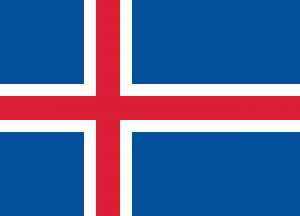Difference between revisions of "Language/Icelandic/Grammar/Pronouns"
Jump to navigation
Jump to search
| Line 1: | Line 1: | ||
[[File:Icelandic-Language-PolyglotClub.png|thumb]] | |||
<div style="font-size:300%"> Pronouns in Icelandic</div> | |||
There are personal (ég, þú), reflexive (sig), possessive (minn, þinn), demonstrative (þessi, hinn), and indefinite (enginn) pronouns in Icelandic. | There are personal (ég, þú), reflexive (sig), possessive (minn, þinn), demonstrative (þessi, hinn), and indefinite (enginn) pronouns in Icelandic. | ||
| Line 17: | Line 22: | ||
|<big>They</big>: <dfn>þeir/þær/þau</dfn> | |<big>They</big>: <dfn>þeir/þær/þau</dfn> | ||
|} | |} | ||
==Sources== | |||
Book: Learn to Speak Icelandic: without even trying, Stephen Hernandez'' | |||
Revision as of 10:46, 2 October 2021
Pronouns in Icelandic
There are personal (ég, þú), reflexive (sig), possessive (minn, þinn), demonstrative (þessi, hinn), and indefinite (enginn) pronouns in Icelandic.
Personal pronouns in Icelandic are declined in the four cases and for number in the singular and plural.
Icelandic has separate masculine, feminine and neuter words for they. When talking about a group of mixed gender people or items, the neuter form is used.
Examples
| I: ég | You: þú |
| He: hann | She: hún |
| We: við | They: þeir/þær/þau |
Sources
Book: Learn to Speak Icelandic: without even trying, Stephen Hernandez
